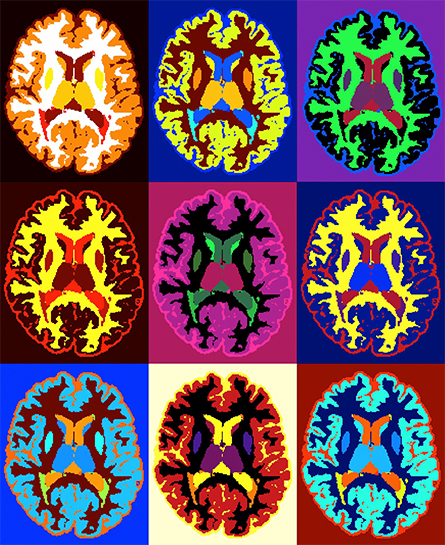Sphingolipids show potential as biomarkers for multiple sclerosis
Multiple sclerosis is an immune-mediated disease affecting the central nervous system. In MS, the myelin layer of the nerve cells is damaged by the immune system, creating plaques or lesions that cause problems in signal transmission between the brain and the rest of the body. According to the National Multiple Sclerosis Society, more than 1 million people in the U.S. live with MS. Symptoms include numbness of limbs, vision problems, fatigue and dizziness. There is no cure, but treatments might help to manage symptoms and disease progression. Scientists are looking for potential biomarkers to understand the stages of the disease's development.

Disorders and Stroke, National Institutes of Health
into various tissue types.
Maria Podbielska, a researcher at the Ludwik Hirszfeld Institute of Immunology and Experimental Therapy in Poland, has been working to identify these biomarkers. Her interest in MS developed during her postdoctoral fellowship in Edward L. Hogan's laboratory at the Institute of Molecular Medicine and Genetics in the Medical College of Georgia, Augusta University, between 2005 and 2010. There, she worked on projects involving the pathological mechanisms of MS.
"MS is heterogeneous with respect to clinical, genetic and pathologic features," Podbielska explained. "Therefore, a set of verified and specific biomarkers for each pattern of immune-mediated brain damage needs to be developed in order to recognize them in the general non-biopsied MS population."
Multiple sclerosis consists of two pathological processes: inflammation, or active phase, and neurodegeneration, or inactive or chronic phase. Both phases begin from the onset of the disease, but they develop at different rates. Sphingolipids, or SLs, are an important component of the myelin sheath and could be biomarkers to track these phases.
In a recent paper in the Journal of Lipid Research, Podbielska and her colleagues wrote that they found sphingolipid species as potential biomarkers for the inflammatory and neurodegenerative processes involved in MS pathology. They did a sphingolipodomic analysis using high-performance liquid chromatography–tandem mass spectroscopy in postmortem specimens of normal-appearing white matter from healthy central nervous systems and from patients with active and inactive stages of the disease.
Ceramide, or Cer, is an important component of SL pathways. The researchers found various Cer metabolic forms in different proportions in the active and inactive MS lesions, which clearly showed different SL pathways involved in the active and inactive phases of MS.
The tissue studies implicated sphingolipid biosynthesis in active MS lesions, Podbielska said, but the researchers noticed a different pathological scenario for inactive MS nervous system damage, where the sphingomyelin-ceramide-hexosylceramide metabolic pathway could be responsible for damage to neurons.
"The most important observation is related to our discovery of some kind of MS diagnostic 'red flag' — a striking increase of the ceramide-1-phosphate levels in progressive MS lesions," she said.
Podbielska plans to continue her work to find more potential lipid biomarkers that might help to develop therapeutic treatments for MS.
Enjoy reading ASBMB Today?
Become a member to receive the print edition four times a year and the digital edition monthly.
Learn moreGet the latest from ASBMB Today
Enter your email address, and we’ll send you a weekly email with recent articles, interviews and more.
Latest in Science
Science highlights or most popular articles

Exploring the link between lipids and longevity
Meng Wang will present her work on metabolism and aging at the ASBMB Annual Meeting, March 7-10, just outside of Washington, D.C.

Defining a ‘crucial gatekeeper’ of lipid metabolism
George Carman receives the Herbert Tabor Research Award at the ASBMB Annual Meeting, March 7–10, just outside of Washington, D.C.

The science of staying strong
Muscles power every movement, but they also tell the story of aging itself. Scientists are uncovering how strength fades, why some species resist it and what lifestyle and molecular clues could help preserve muscle health for life.

Bacteriophage protein could make queso fresco safer
Researchers characterized the structure and function of PlyP100, a bacteriophage protein that shows promise as a food-safe antimicrobial for preventing Listeria monocytogenes growth in fresh cheeses.

Building the blueprint to block HIV
Wesley Sundquist will present his work on the HIV capsid and revolutionary drug, Lenacapavir, at the ASBMB Annual Meeting, March 7–10, in Maryland.

Gut microbes hijack cancer pathway in high-fat diets
Researchers at the Feinstein Institutes for Medical Research found that a high-fat diet increases ammonia-producing bacteria in the gut microbiome of mice, which in turn disrupts TGF-β signaling and promotes colorectal cancer.

